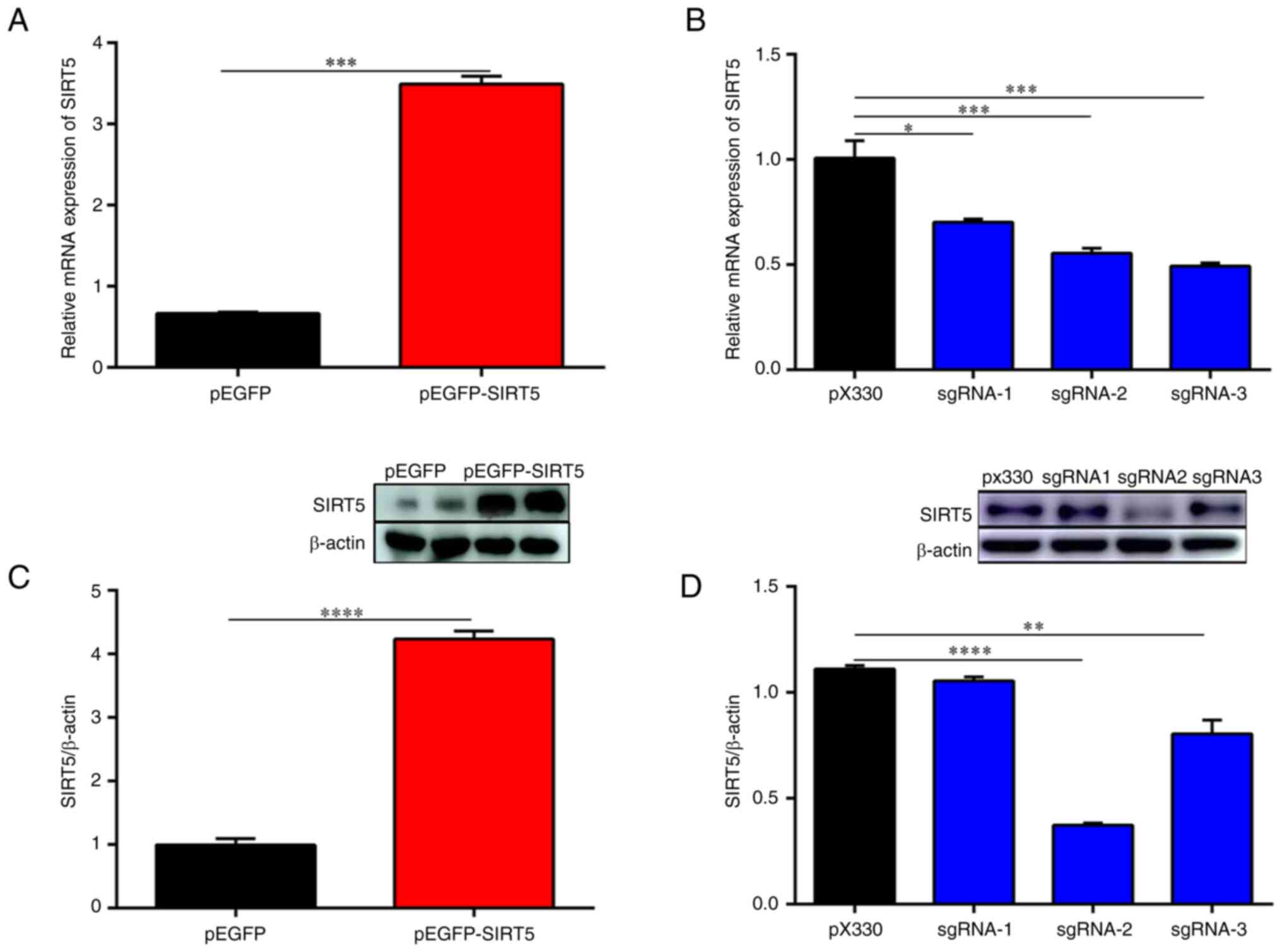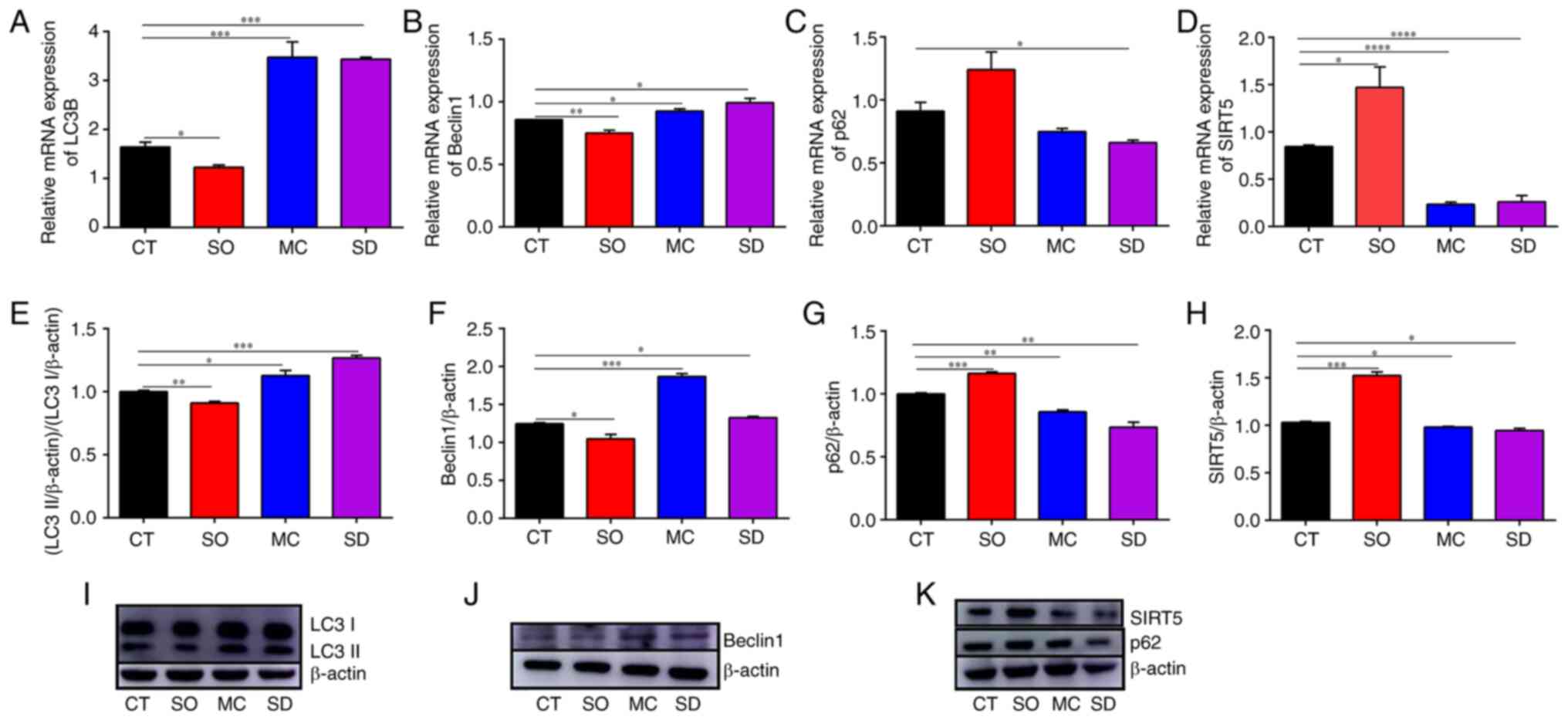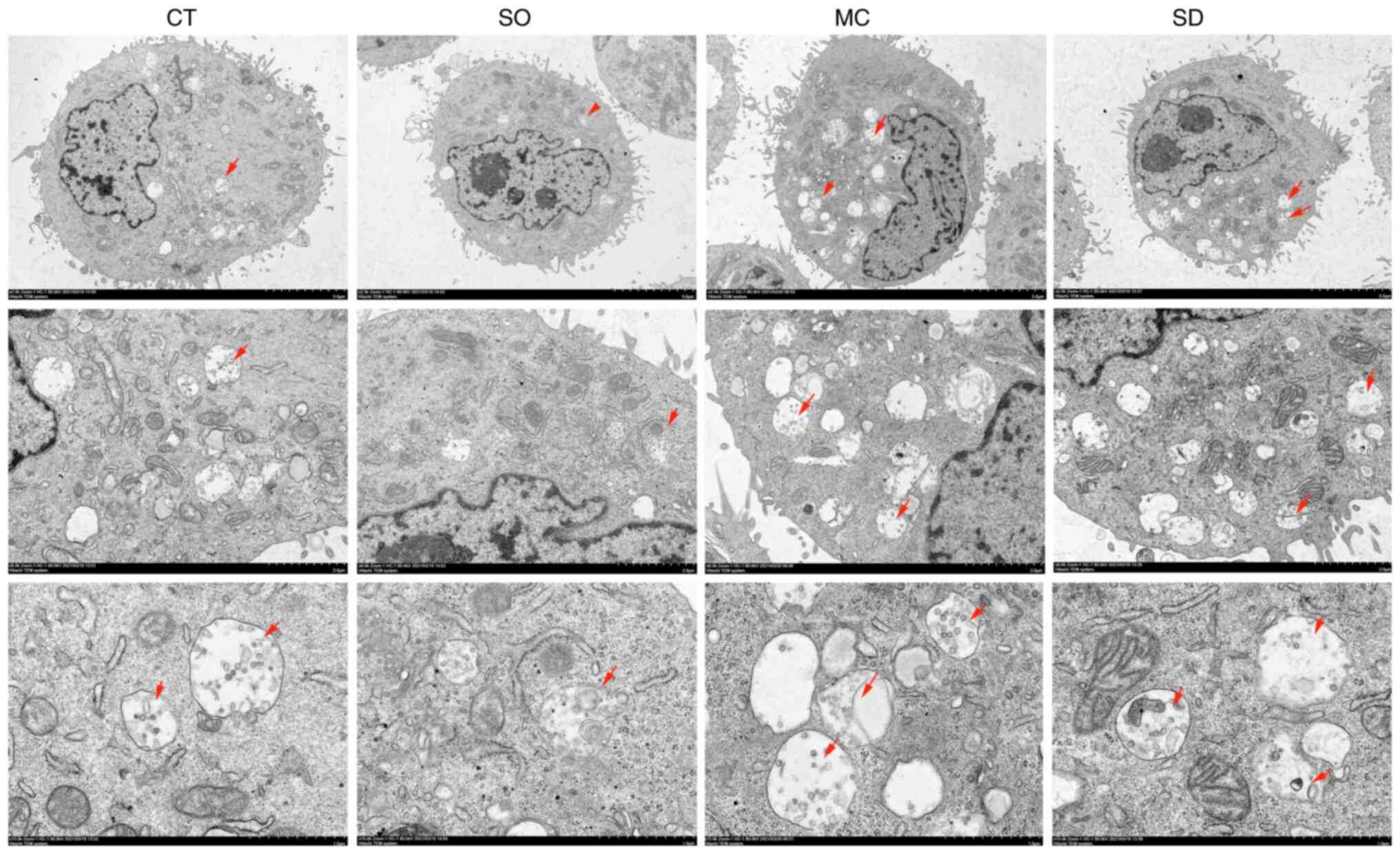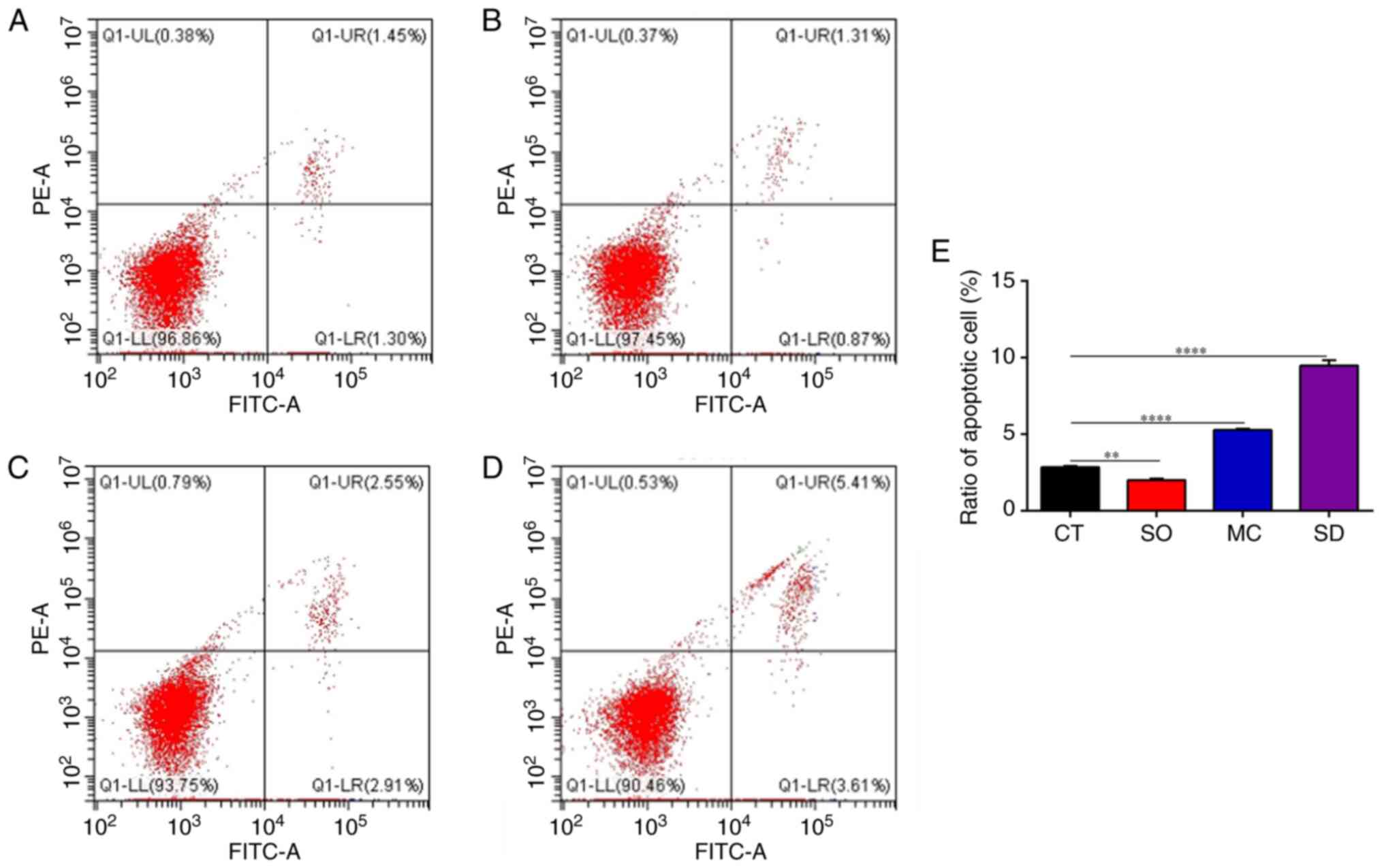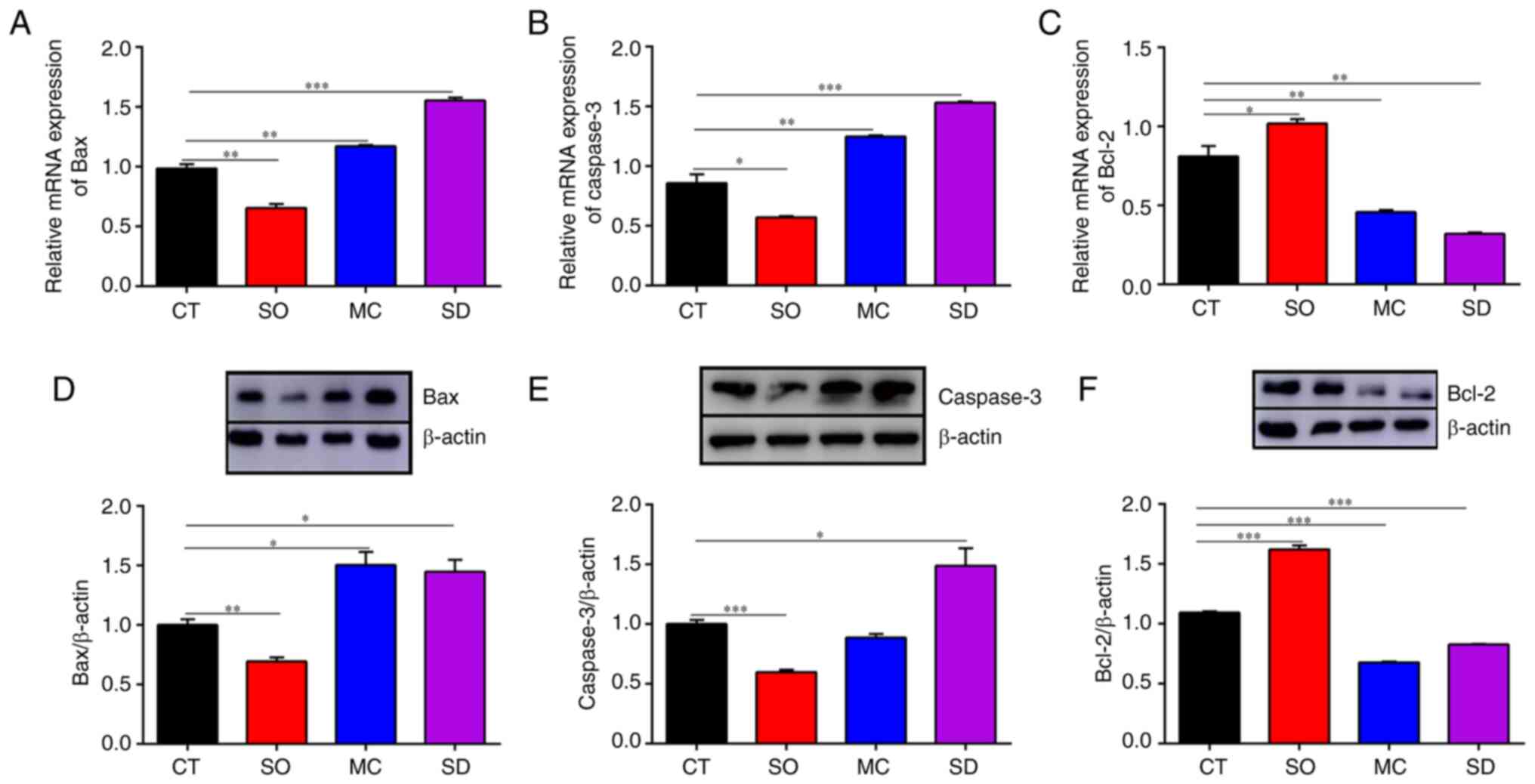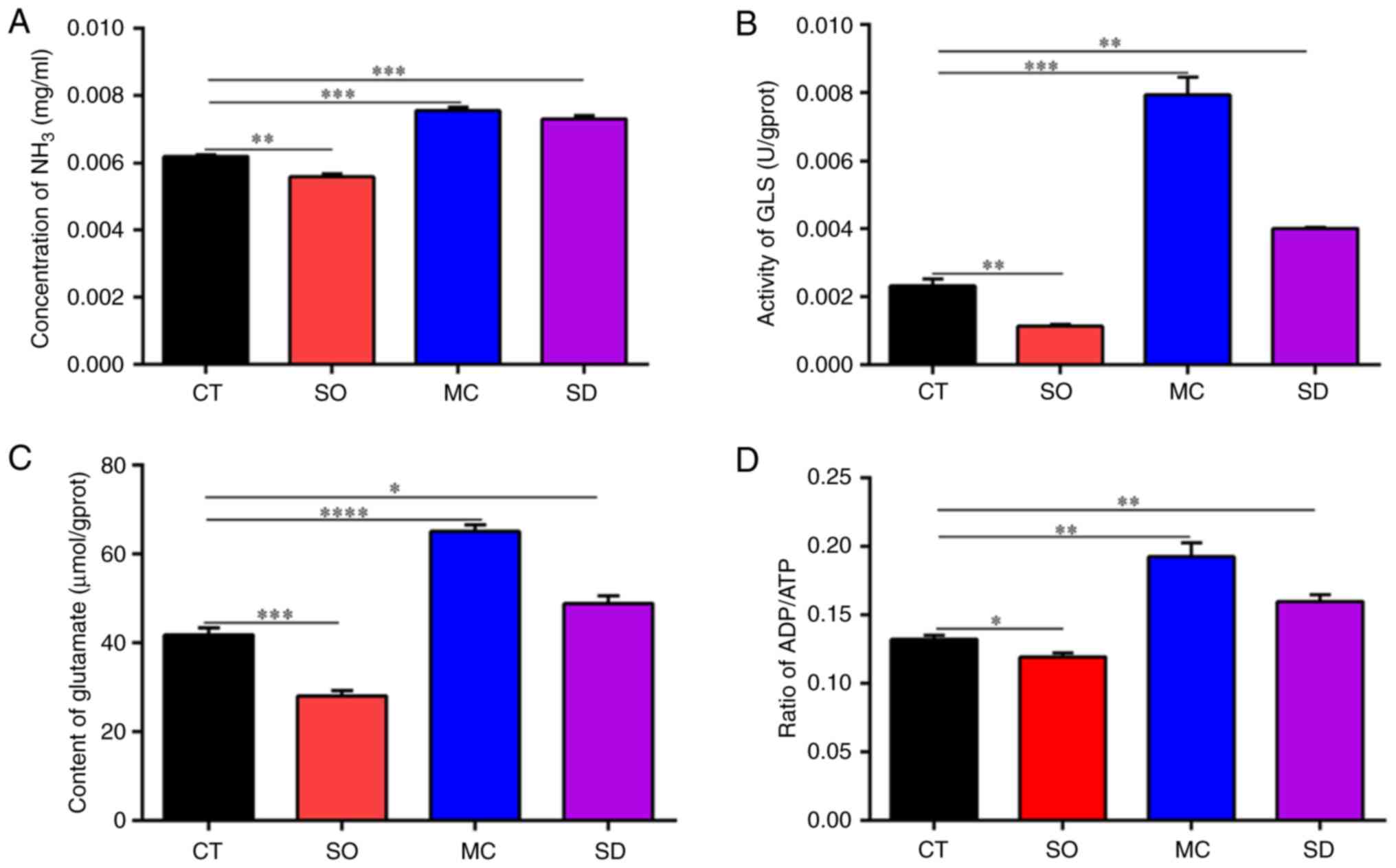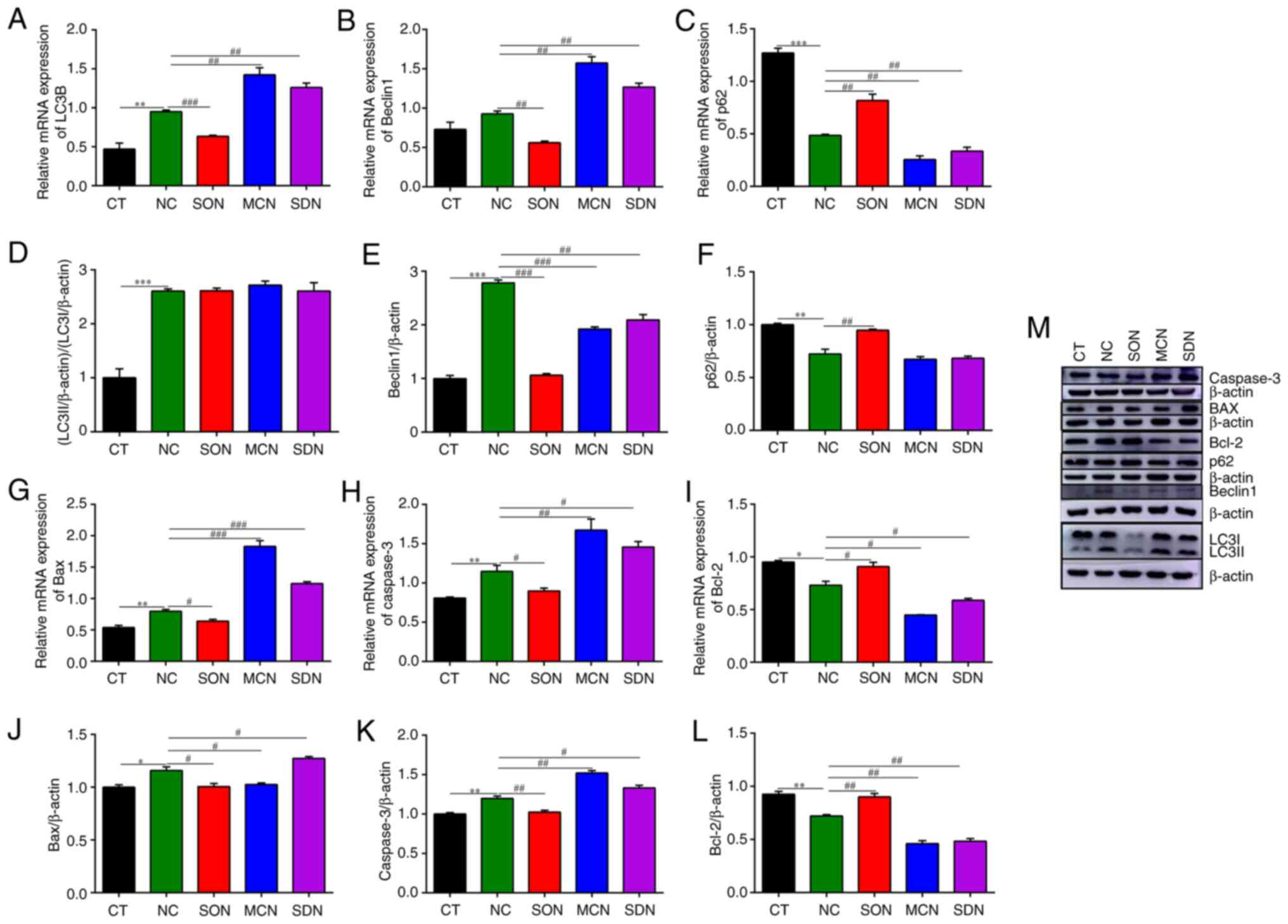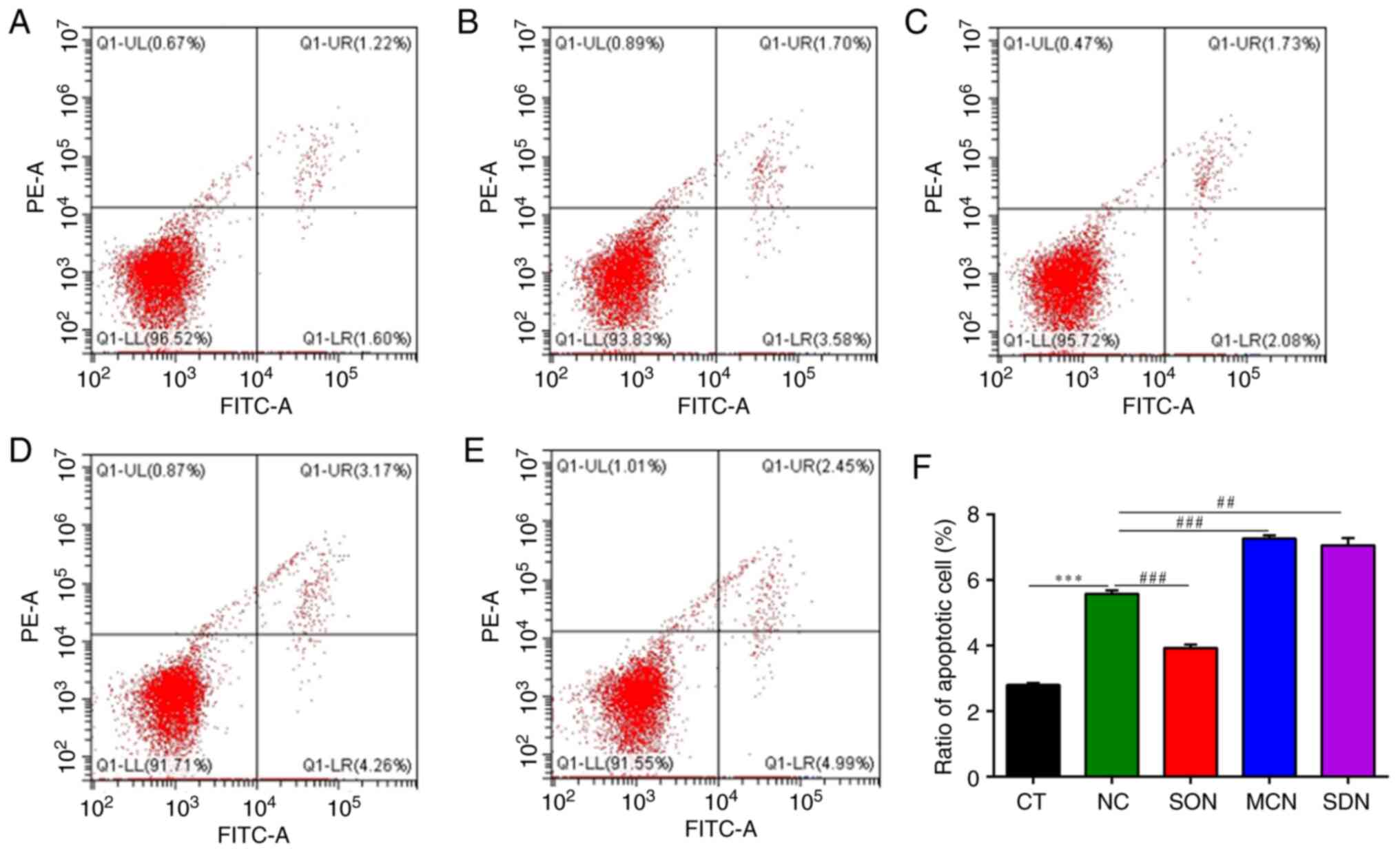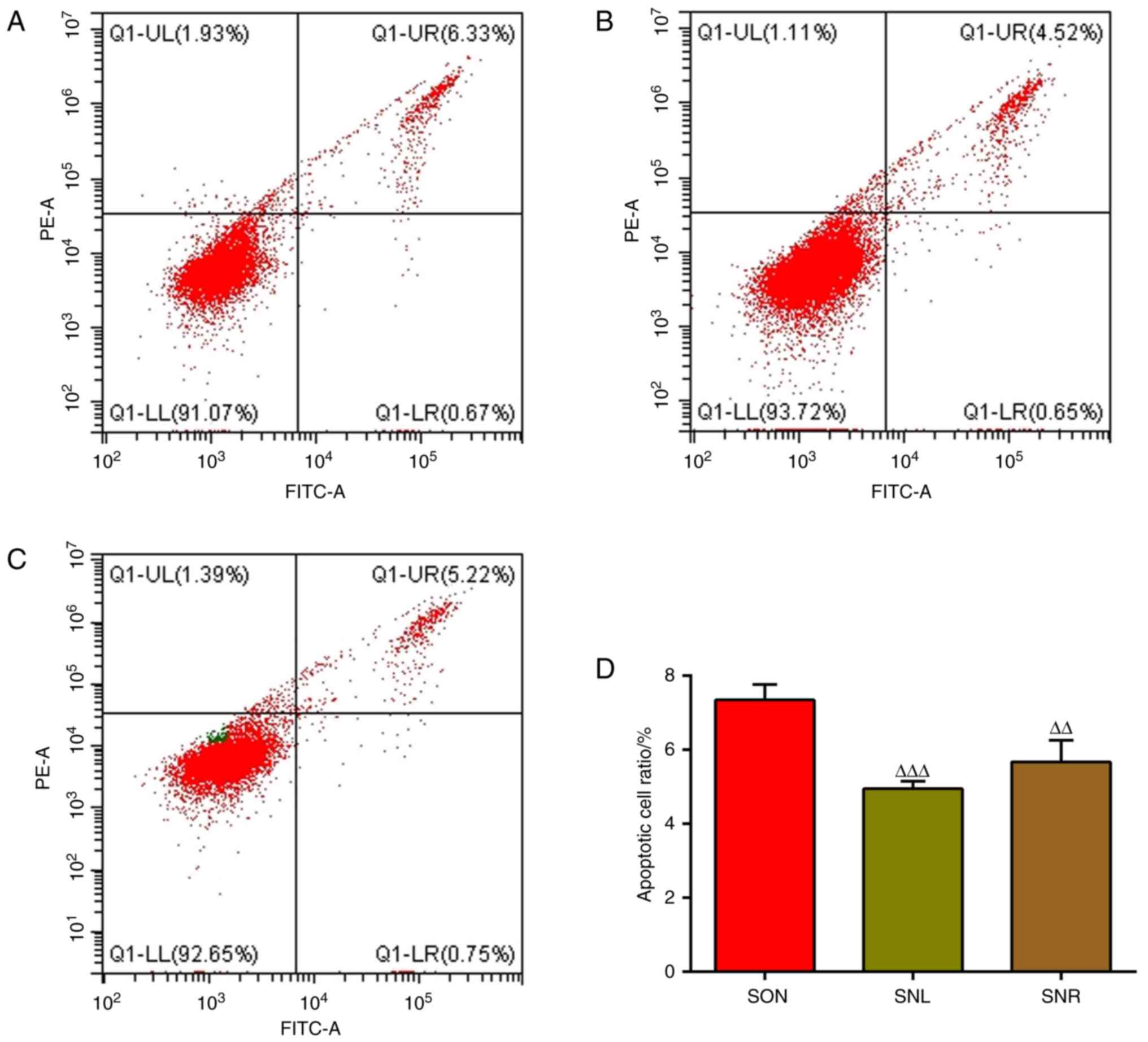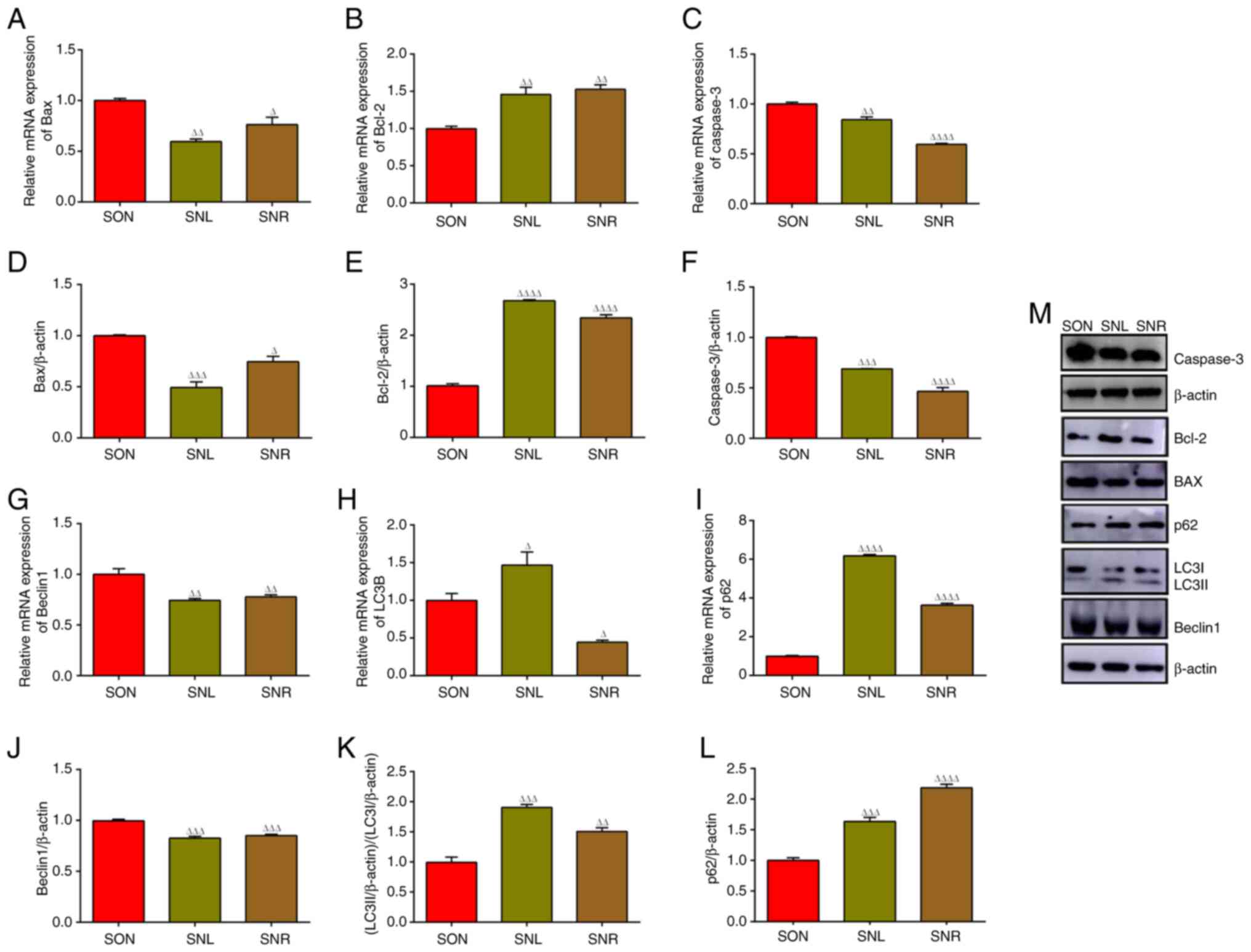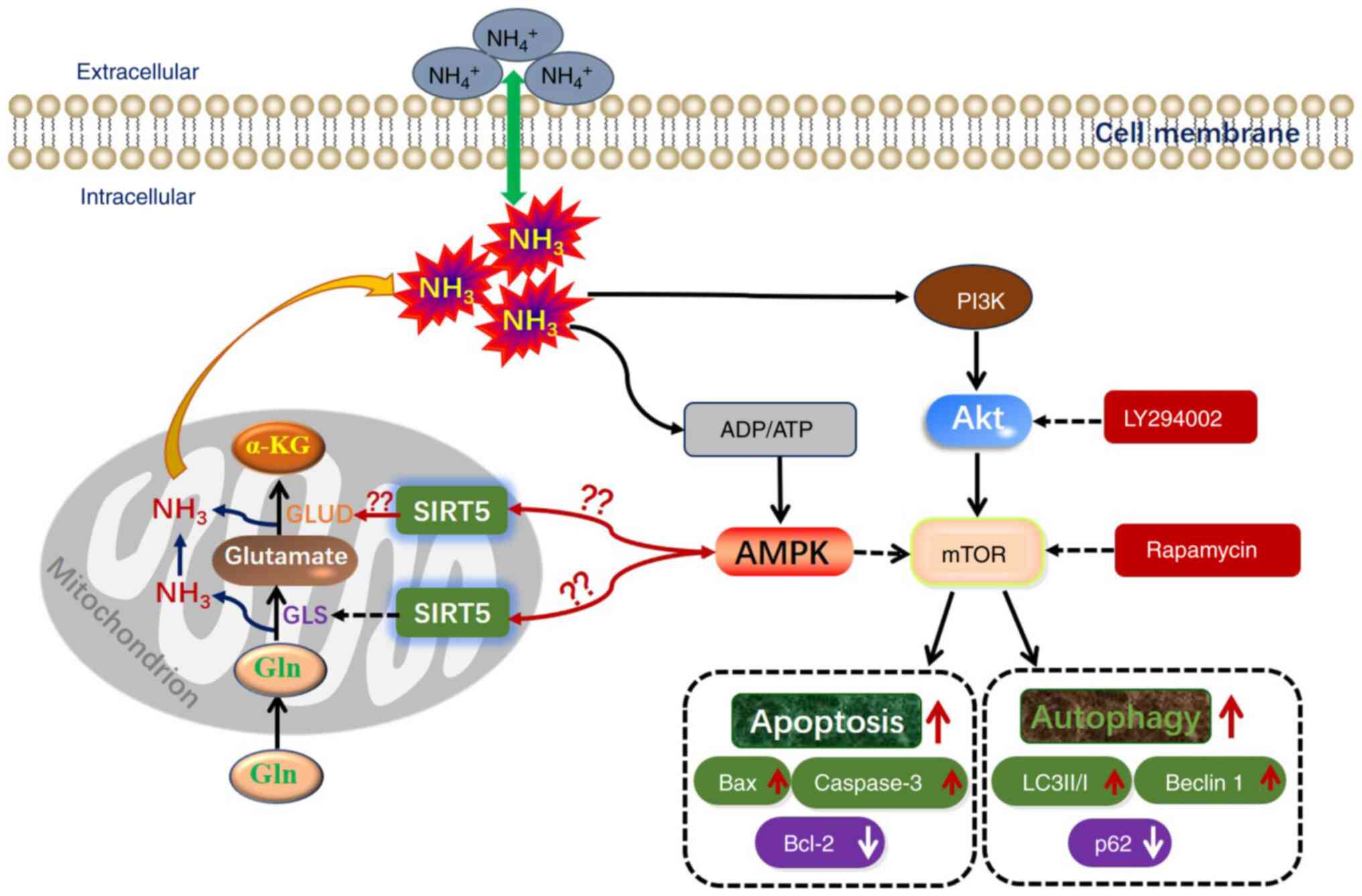|
1
|
Meng Z, Lin W, Zhang R, Han Z and Jia X:
Summertime ambient ammonia and its effects on ammonium aerosol in
urban Beijing, China. Sci Total Environ. 579:1521–1530.
2017.PubMed/NCBI View Article : Google Scholar
|
|
2
|
Phillips CJ, Pines MK, Latter M, Muller T,
Petherick JC, Norman ST and Gaughan JB: The physiological and
behavioral responses of steers to gaseous ammonia in simulated
long-distance transport by ship. J Anim Sci. 88:3579–3589.
2010.PubMed/NCBI View Article : Google Scholar
|
|
3
|
Spinelli JB, Yoon H, Ringel AE, Jeanfavre
S, Clish CB and Haigis MC: Metabolic recycling of ammonia via
glutamate dehydrogenase supports breast cancer biomass. Science.
358:941–946. 2017.PubMed/NCBI View Article : Google Scholar
|
|
4
|
Kappler M, Pabst U, Rot S, Taubert H,
Wichmann H, Schubert J, Bache M, Weinholdt C, Immel UD, Grosse I,
et al: Normoxic accumulation of HIF1α is associated with
glutaminolysis. Clin Oral Investig. 21:211–224. 2017.PubMed/NCBI View Article : Google Scholar
|
|
5
|
Murrow L and Debnath J: Autophagy as a
stress-response and quality-control mechanism: Implications for
cell injury and human disease. Annu Rev Pathol. 8:105–137.
2013.PubMed/NCBI View Article : Google Scholar
|
|
6
|
Nixon RA: The role of autophagy in
neurodegenerative disease. Nat Med. 19:983–997. 2013.PubMed/NCBI View Article : Google Scholar
|
|
7
|
Cruz HJ, Freitas CM, Alves PM, Moreira JL
and Carrondo MJ: Effects of ammonia and lactate on growth,
metabolism, and productivity of BHK cells. Enzyme Microb Technol.
27:43–52. 2000.PubMed/NCBI View Article : Google Scholar
|
|
8
|
Chen XY, Shao JZ, Xiang LX and Liu XM:
Involvement of apoptosis in malathion-induced cytotoxicity in a
grass carp (Ctenopharyngodon idellus) cell line. Comp Biochem
Physiol C Toxicol Pharmacol. 142:36–45. 2006.PubMed/NCBI View Article : Google Scholar
|
|
9
|
Gottlieb E, Armour SM, Harris MH and
Thompson CB: Mitochondrial membrane potential regulates matrix
configuration and cytochrome c release during apoptosis. Cell Death
Differ. 10:709–717. 2003.PubMed/NCBI View Article : Google Scholar
|
|
10
|
Wang F, Chen S, Jiang Y, Zhao Y, Sun L,
Zheng B, Chen L, Liu Z, Zheng X, Yi K, et al: Effects of ammonia on
apoptosis and oxidative stress in bovine mammary epithelial cells.
Mutagenesis. 33:291–299. 2018.PubMed/NCBI View Article : Google Scholar
|
|
11
|
Feng L, Liao H, Liu J, Xu C, Zhong K, Zhu
H, Guo S, Guo Y, Han L, Li H and Wang Y: Inhibition of
PI3K/Akt/mTOR pathway by ammonium chloride induced apoptosis and
autophagy in MAC-T cell. Res Vet Sci. 136:622–630. 2021.PubMed/NCBI View Article : Google Scholar
|
|
12
|
Zhu S, Dong Z, Ke X, Hou J, Zhao E, Zhang
K, Wang F, Yang L, Xiang Z and Cui H: The roles of sirtuins family
in cell metabolism during tumor development. Semin Cancer Biol.
57:59–71. 2019.PubMed/NCBI View Article : Google Scholar
|
|
13
|
Nishida Y, Rardin MJ, Carrico C, He W,
Sahu AK, Gut P, Najjar R, Fitch M, Hellerstein M, Gibson BW and
Verdin E: SIRT5 regulates both cytosolic and mitochondrial protein
malonylation with glycolysis as a major target. Mol Cell.
59:321–332. 2015.PubMed/NCBI View Article : Google Scholar
|
|
14
|
Park J, Chen Y, Tishkoff DX, Peng C, Tan
M, Dai L, Xie Z, Zhang Y, Zwaans BM, Skinner ME, et al:
SIRT5-mediated lysine desuccinylation impacts diverse metabolic
pathways. Mol Cell. 50:919–930. 2013.PubMed/NCBI View Article : Google Scholar
|
|
15
|
Tan M, Peng C, Anderson KA, Chhoy P, Xie
Z, Dai L, Park J, Chen Y, Huang H, Zhang Y, et al: Lysine
glutarylation is a protein posttranslational modification regulated
by SIRT5. Cell Metab. 19:605–617. 2014.PubMed/NCBI View Article : Google Scholar
|
|
16
|
Kumar S and Lombard DB: Functions of the
sirtuin deacylase SIRT5 in normal physiology and pathobiology. Crit
Rev Biochem Mol Biol. 53:311–334. 2018.PubMed/NCBI View Article : Google Scholar
|
|
17
|
Fabbrizi E, Fiorentino F, Carafa V,
Altucci L, Mai A and Rotili D: Emerging roles of SIRT5 in
metabolism, cancer, and SARS-CoV-2 infection. Cells.
12(852)2023.PubMed/NCBI View Article : Google Scholar
|
|
18
|
Rardin MJ, He W, Nishida Y, Newman JC,
Carrico C, Danielson SR, Guo A, Gut P, Sahu AK, Li B, et al: SIRT5
regulates the mitochondrial lysine succinylome and metabolic
networks. Cell Metab. 18:920–933. 2013.PubMed/NCBI View Article : Google Scholar
|
|
19
|
Lin ZF, Xu HB, Wang JY, Lin Q, Ruan Z, Liu
FB, Jin W, Huang HH and Chen X: SIRT5 desuccinylates and activates
SOD1 to eliminate ROS. Biochem Biophys Res Commun. 441:191–195.
2013.PubMed/NCBI View Article : Google Scholar
|
|
20
|
Shi L, Yan H, An S, Shen M, Jia W, Zhang
R, Zhao L, Huang G and Liu J: SIRT5-mediated deacetylation of LDHB
promotes autophagy and tumorigenesis in colorectal cancer. Mol
Oncol. 13:358–375. 2019.PubMed/NCBI View Article : Google Scholar
|
|
21
|
Gu W, Qian Q, Xu Y, Xu X, Zhang L, He S
and Li D: SIRT5 regulates autophagy and apoptosis in gastric cancer
cells. J Int Med Res. 49(300060520986355)2021.PubMed/NCBI View Article : Google Scholar
|
|
22
|
Garva R, Thepmalee C, Yasamut U, Sudsaward
S, Guazzelli A, Rajendran R, Tongmuang N, Khunchai S, Meysami P,
Limjindaporn T, et al: Sirtuin family members selectively regulate
autophagy in osteosarcoma and mesothelioma cells in response to
cellular stress. Front Oncol. 9(949)2019.PubMed/NCBI View Article : Google Scholar
|
|
23
|
Wang Y, Liu Q, Huan Y, Li R, Li C, Sun S,
Guo N, Yang M, Liu S and Shen Z: Sirtuin 5 overexpression
attenuates glucolipotoxicity-induced pancreatic β cells apoptosis
and dysfunction. Exp Cell Res. 371:205–213. 2018.PubMed/NCBI View Article : Google Scholar
|
|
24
|
Cantó C, Jiang LQ, Deshmukh AS, Mataki C,
Coste A, Lagouge M, Zierath JR and Auwerx J: Interdependence of
AMPK and SIRT1 for metabolic adaptation to fasting and exercise in
skeletal muscle. Cell Metab. 11:213–219. 2010.PubMed/NCBI View Article : Google Scholar
|
|
25
|
Polletta L, Vernucci E, Carnevale I,
Arcangeli T, Rotili D, Palmerio S, Steegborn C, Nowak T,
Schutkowski M, Pellegrini L, et al: SIRT5 regulation of
ammonia-induced autophagy and mitophagy. Autophagy. 11:253–270.
2015.PubMed/NCBI View Article : Google Scholar
|
|
26
|
Manning BD and Toker A: AKT/PKB signaling:
Navigating the network. Cell. 169:381–405. 2017.PubMed/NCBI View Article : Google Scholar
|
|
27
|
Zhang C, He X, Sheng Y, Xu J, Yang C,
Zheng S, Liu J, Li H, Ge J, Yang M, et al: Allicin regulates energy
homeostasis through brown adipose tissue. iScience.
23(101113)2020.PubMed/NCBI View Article : Google Scholar
|
|
28
|
Fiorentino F, Mautone N, Menna M, D'Acunzo
F, Mai A and Rotili D: Sirtuin modulators: past, present, and
future perspectives. Future Med Chem. 14:915–939. 2022.PubMed/NCBI View Article : Google Scholar
|
|
29
|
Caccamo A, Majumder S, Richardson A,
Strong R and Oddo S: Molecular interplay between mammalian target
of rapamycin (mTOR), amyloid-beta, and Tau: Effects on cognitive
impairments. J Biol Chem. 285:13107–13120. 2010.PubMed/NCBI View Article : Google Scholar
|
|
30
|
Csibi A, Fendt SM, Li C, Poulogiannis G,
Choo AY, Chapski DJ, Jeong SM, Dempsey JM, Parkhitko A, Morrison T,
et al: The mTORC1 pathway stimulates glutamine metabolism and cell
proliferation by repressing SIRT4. Cell. 153:840–854.
2013.PubMed/NCBI View Article : Google Scholar
|
|
31
|
Csibi A, Lee G, Yoon SO, Tong H, Ilter D,
Elia I, Fendt SM, Roberts TM and Blenis J: The mTORC1/S6K1 pathway
regulates glutamine metabolism through the eIF4B-dependent control
of c-Myc translation. Curr Biol. 24:2274–2280. 2014.PubMed/NCBI View Article : Google Scholar
|
|
32
|
Cheng A, Zhang Y, Mei H, Fang S, Ji P,
Yang J, Yu L and Guo W: Construction of recombinant pEGFP-N1-hPer2
plasmid and its expression in osteosarcoma cells. Oncol Lett.
11:2768–2772. 2016.PubMed/NCBI View Article : Google Scholar
|
|
33
|
Djavaheri-Mergny M, Maiuri MC and Kroemer
G: Cross talk between apoptosis and autophagy by caspase-mediated
cleavage of Beclin 1. Oncogene. 29:1717–1719. 2010.PubMed/NCBI View Article : Google Scholar
|
|
34
|
Gu X, Han D, Chen W, Zhang L, Lin Q, Gao
J, Fanning S and Han B: SIRT1-mediated FoxOs pathways protect
against apoptosis by promoting autophagy in osteoblast-like
MC3T3-E1 cells exposed to sodium fluoride. Oncotarget.
7:65218–65230. 2016.PubMed/NCBI View Article : Google Scholar
|
|
35
|
Zhang S, Jiang S, Wang H, Di W, Deng C,
Jin Z, Yi W, Xiao X, Nie Y and Yang Y: SIRT6 protects against
hepatic ischemia/reperfusion injury by inhibiting apoptosis and
autophagy related cell death. Free Radic Biol Med. 115:18–30.
2018.PubMed/NCBI View Article : Google Scholar
|
|
36
|
Xu D, Jiang X, He H, Liu D, Yang L, Chen
H, Wu L, Geng G and Li Q: SIRT2 functions in aging, autophagy, and
apoptosis in post-maturation bovine oocytes. Life Sci.
232(116639)2019.PubMed/NCBI View Article : Google Scholar
|
|
37
|
Nakagawa T, Lomb DJ, Haigis MC and
Guarente L: SIRT5 deacetylates carbamoyl phosphate synthetase 1 and
regulates the urea cycle. Cell. 137:560–570. 2009.PubMed/NCBI View Article : Google Scholar
|
|
38
|
Rama Rao KV and Norenberg MD: Glutamine in
the pathogenesis of hepatic encephalopathy: The trojan horse
hypothesis revisited. Neurochem Res. 39:593–598. 2014.PubMed/NCBI View Article : Google Scholar
|
|
39
|
Wilkinson DJ, Smeeton NJ and Watt PW:
Ammonia metabolism, the brain and fatigue; revisiting the link.
Prog Neurobiol. 91:200–219. 2010.PubMed/NCBI View Article : Google Scholar
|
|
40
|
Aledo JC, de Pedro E, Gómez-Fabre PM,
Núñez de Castro I and Márquez J: Submitochondrial localization and
membrane topography of Ehrlich ascitic tumour cell glutaminase.
Biochim Biophys Acta. 1323:173–184. 1997.PubMed/NCBI View Article : Google Scholar
|
|
41
|
Katt WP and Cerione RA: Glutaminase
regulation in cancer cells: A druggable chain of events. Drug
Discov Today. 19:450–457. 2014.PubMed/NCBI View Article : Google Scholar
|
|
42
|
Eng CH, Yu K, Lucas J, White E and Abraham
RT: Ammonia derived from glutaminolysis is a diffusible regulator
of autophagy. Sci Signal. 3(ra31)2010.PubMed/NCBI View Article : Google Scholar
|
|
43
|
Visek WJ: Ammonia: Its effects on
biological systems, metabolic hormones, and reproduction. J Dairy
Sci. 67:481–498. 1984.PubMed/NCBI View Article : Google Scholar
|
|
44
|
Qiu J, Tsien C, Thapalaya S, Narayanan A,
Weihl CC, Ching JK, Eghtesad B, Singh K, Fu X, Dubyak G, et al:
Hyperammonemia-mediated autophagy in skeletal muscle contributes to
sarcopenia of cirrhosis. Am J Physiol Endocrinol Metab.
303:E983–E993. 2012.PubMed/NCBI View Article : Google Scholar
|
|
45
|
Tooze SA and Dikic I: Autophagy captures
the nobel prize. Cell. 167:1433–1435. 2016.PubMed/NCBI View Article : Google Scholar
|
|
46
|
Anding AL and Baehrecke EH: Cleaning
house: Selective autophagy of organelles. Dev Cell. 41:10–22.
2017.PubMed/NCBI View Article : Google Scholar
|
|
47
|
Greene KS, Lukey MJ, Wang X, Blank B,
Druso JE, Lin MJ, Stalnecker CA, Zhang C, Negrón Abril Y, Erickson
JW, et al: SIRT5 stabilizes mitochondrial glutaminase and supports
breast cancer tumorigenesis. Proc Natl Acad Sci USA.
116:26625–26632. 2019.PubMed/NCBI View Article : Google Scholar
|
|
48
|
Li Z, Ji X, Wang W, Liu J, Liang X, Wu H,
Liu J, Eggert US, Liu Q and Zhang X: Ammonia induces autophagy
through dopamine receptor D3 and mTOR. PLoS One.
11(e0153526)2016.PubMed/NCBI View Article : Google Scholar
|
|
49
|
Motyl T, Gajkowska B, Zarzyńska J,
Gajewska M and Lamparska-Przybysz M: Apoptosis and autophagy in
mammary gland remodeling and breast cancer chemotherapy. J Physiol
Pharmacol. 57 (Suppl 7):S17–S32. 2006.PubMed/NCBI
|
|
50
|
Gao CF, Ren S, Zhang L, Nakajima T,
Ichinose S, Hara T, Koike K and Tsuchida N: Caspase-dependent
cytosolic release of cytochrome c and membrane translocation of Bax
in p53-induced apoptosis. Exp Cell Res. 265:145–151.
2001.PubMed/NCBI View Article : Google Scholar
|
|
51
|
Ding HF and Fisher DE: p53, caspase 8, and
regulation of apoptosis after ionizing radiation. J Pediatr Hematol
Oncol. 23:185–188. 2001.PubMed/NCBI View Article : Google Scholar
|
|
52
|
Cory S and Adams JM: The Bcl2 family:
Regulators of the cellular life-or-death switch. Nat Rev Cancer.
2:647–656. 2002.PubMed/NCBI View
Article : Google Scholar
|
|
53
|
Wang F, Zhao Y, Chen S, Chen L, Sun L, Cao
M, Li C and Zhou X: Astragaloside IV alleviates ammonia-induced
apoptosis and oxidative stress in bovine mammary epithelial cells.
Int J Mol Sci. 20(600)2019.PubMed/NCBI View Article : Google Scholar
|
|
54
|
Zhang M, Wu J, Sun R, Tao X, Wang X, Kang
Q, Wang H, Zhang L, Liu P, Zhang J, et al: SIRT5 deficiency
suppresses mitochondrial ATP production and promotes AMPK
activation in response to energy stress. PLoS One.
14(e0211796)2019.PubMed/NCBI View Article : Google Scholar
|
|
55
|
Li W, Yang Y, Li Y, Zhao Y and Jiang H:
Sirt5 attenuates cisplatin-induced acute kidney injury through
regulation of Nrf2/HO-1 and Bcl-2. Biomed Res Int.
2019(4745132)2019.PubMed/NCBI View Article : Google Scholar
|
|
56
|
Madrigal-Matute J and Cuervo AM:
Regulation of liver metabolism by autophagy. Gastroenterology.
150:328–339. 2016.PubMed/NCBI View Article : Google Scholar
|
|
57
|
Menzies FM, Fleming A and Rubinsztein DC:
Compromised autophagy and neurodegenerative diseases. Nat Rev
Neurosci. 16:345–357. 2015.PubMed/NCBI View Article : Google Scholar
|
|
58
|
Yeung F, Hoberg JE, Ramsey CS, Keller MD,
Jones DR, Frye RA and Mayo MW: Modulation of NF-kappaB-dependent
transcription and cell survival by the SIRT1 deacetylase. EMBO J.
23:2369–2380. 2004.PubMed/NCBI View Article : Google Scholar
|
|
59
|
Guarani V, Deflorian G, Franco CA, Krüger
M, Phng LK, Bentley K, Toussaint L, Dequiedt F, Mostoslavsky R,
Schmidt MHH, et al: Acetylation-dependent regulation of endothelial
Notch signalling by the SIRT1 deacetylase. Nature. 473:234–238.
2011.PubMed/NCBI View Article : Google Scholar
|
|
60
|
Malik S, Villanova L, Tanaka S, Aonuma M,
Roy N, Berber E, Pollack JR, Michishita-Kioi E and Chua KF: SIRT7
inactivation reverses metastatic phenotypes in epithelial and
mesenchymal tumors. Sci Re. 5(9841)2015.PubMed/NCBI View Article : Google Scholar
|
|
61
|
Kihara A, Kabeya Y, Ohsumi Y and Yoshimori
T: Beclin-phosphatidylinositol 3-kinase complex functions at the
trans-Golgi network. EMBO Rep. 2:330–335. 2001.PubMed/NCBI View Article : Google Scholar
|
|
62
|
Pankiv S, Clausen TH, Lamark T, Brech A,
Bruun JA, Outzen H, Øvervatn A, Bjørkøy G and Johansen T:
p62/SQSTM1 binds directly to Atg8/LC3 to facilitate degradation of
ubiquitinated protein aggregates by autophagy. J Biol Chem.
282:24131–24145. 2007.PubMed/NCBI View Article : Google Scholar
|
|
63
|
Lamark T, Svenning S and Johansen T:
Regulation of selective autophagy: The p62/SQSTM1 paradigm. Essays
Biochem. 61:609–624. 2017.PubMed/NCBI View Article : Google Scholar
|
|
64
|
Zhong Y, Wang QJ and Yue Z: Atg14L and
rubicon: Yin and yang of Beclin 1-mediated autophagy control.
Autophagy. 5:890–891. 2009.PubMed/NCBI View Article : Google Scholar
|
|
65
|
Huang W, Cao Z, Zhang J, Ji Q and Li Y:
Aflatoxin B1 promotes autophagy associated with
oxidative stress-related PI3K/AKT/mTOR signaling pathway in mice
testis. Environ Pollut. 255(113317)2019.PubMed/NCBI View Article : Google Scholar
|
|
66
|
Merhi A, Delrée P and Marini AM: The
metabolic waste ammonium regulates mTORC2 and mTORC1 signaling. Sci
Rep. 7(44602)2017.PubMed/NCBI View Article : Google Scholar
|
|
67
|
Cheng Z, Shu Y, Li X, Li Y, Zhou S and Liu
H: Evaluation of potential cardiotoxicity of ammonia:
L-selenomethionine inhibits ammonia-induced cardiac autophagy by
activating the PI3K/AKT/mTOR signaling pathway. Ecotoxicol Environ
Saf. 233(113304)2022.PubMed/NCBI View Article : Google Scholar
|
|
68
|
Han Q, Wang A, Fu Q, Zhou S, Bao J and
Xing H: Protective role of selenium on ammonia-mediated
nephrotoxicity via PI3K/AKT/mTOR pathway: Crosstalk between
autophagy and cytokine release. Ecotoxicol Environ Saf.
242(113918)2022.PubMed/NCBI View Article : Google Scholar
|
|
69
|
Li Z, Miao Z, Ding L, Teng X and Bao J:
Energy metabolism disorder mediated ammonia gas-induced autophagy
via AMPK/mTOR/ULK1-Beclin1 pathway in chicken livers. Ecotoxicol
Environ Saf. 217(112219)2021.PubMed/NCBI View Article : Google Scholar
|
|
70
|
Wang J, Wang J, Li Y, Han Q, Wang Y, Liu H
and Bao J: Organic selenium alleviates ammonia-mediated abnormal
autophagy by regulating inflammatory pathways and the Keap1/Nrf2
axis in the hypothalamus of finishing pigs. Biol Trace Elem Res.
201:3812–3824. 2023.PubMed/NCBI View Article : Google Scholar
|
|
71
|
Wei T, Xiaojun X and Peilong C:
Magnoflorine improves sensitivity to doxorubicin (DOX) of breast
cancer cells via inducing apoptosis and autophagy through AKT/mTOR
and p38 signaling pathways. Biomed Pharmacother.
121(109139)2020.PubMed/NCBI View Article : Google Scholar
|
|
72
|
Hong J, Mei C, Raza SHA, Khan R, Cheng G
and Zan L: SIRT5 inhibits bovine preadipocyte differentiation and
lipid deposition by activating AMPK and repressing MAPK signal
pathways. Genomics. 112:1065–1076. 2020.PubMed/NCBI View Article : Google Scholar
|
|
73
|
Li Y and Chen Y: AMPK and autophagy. Adv
Exp Med Biol. 1206:85–108. 2019.PubMed/NCBI View Article : Google Scholar
|



